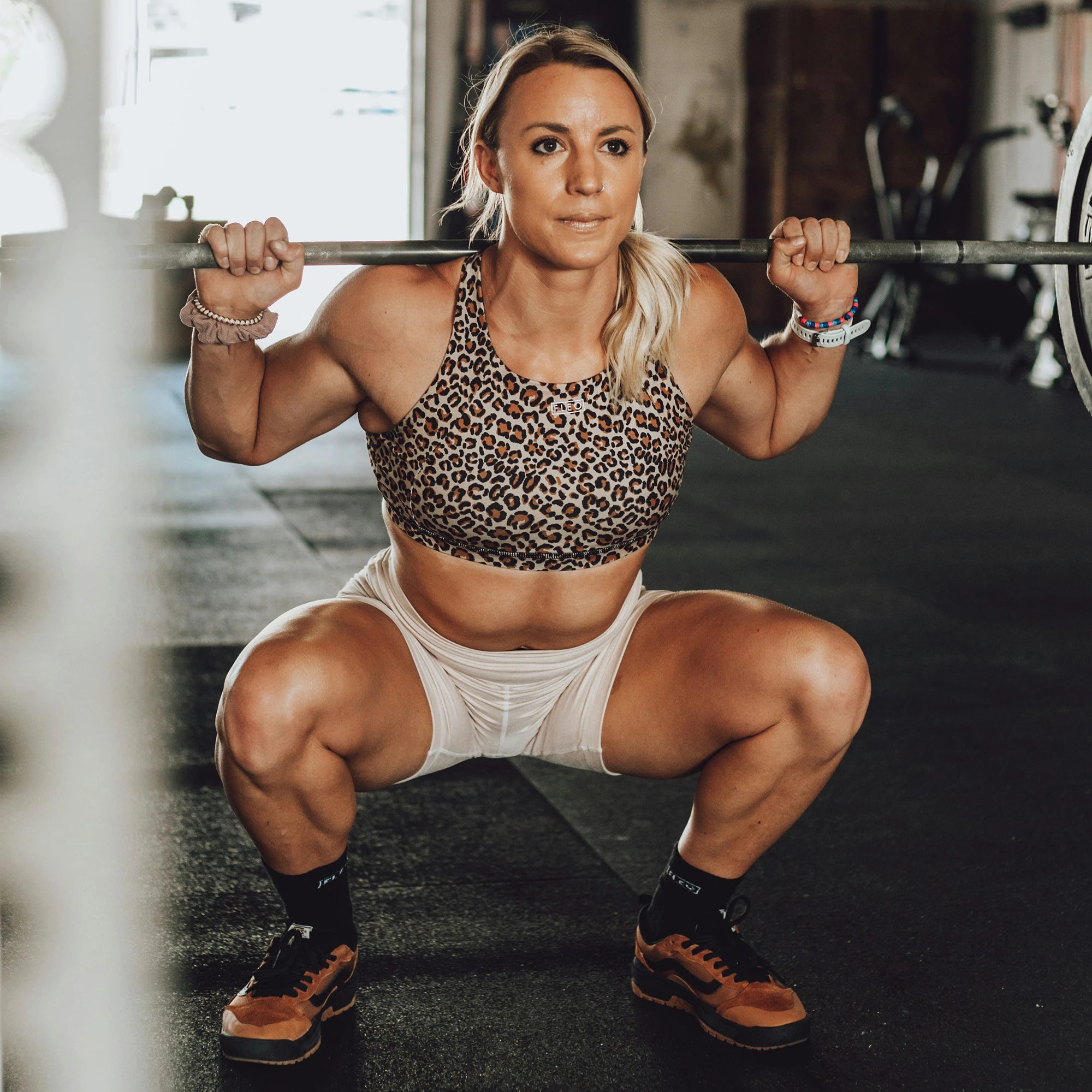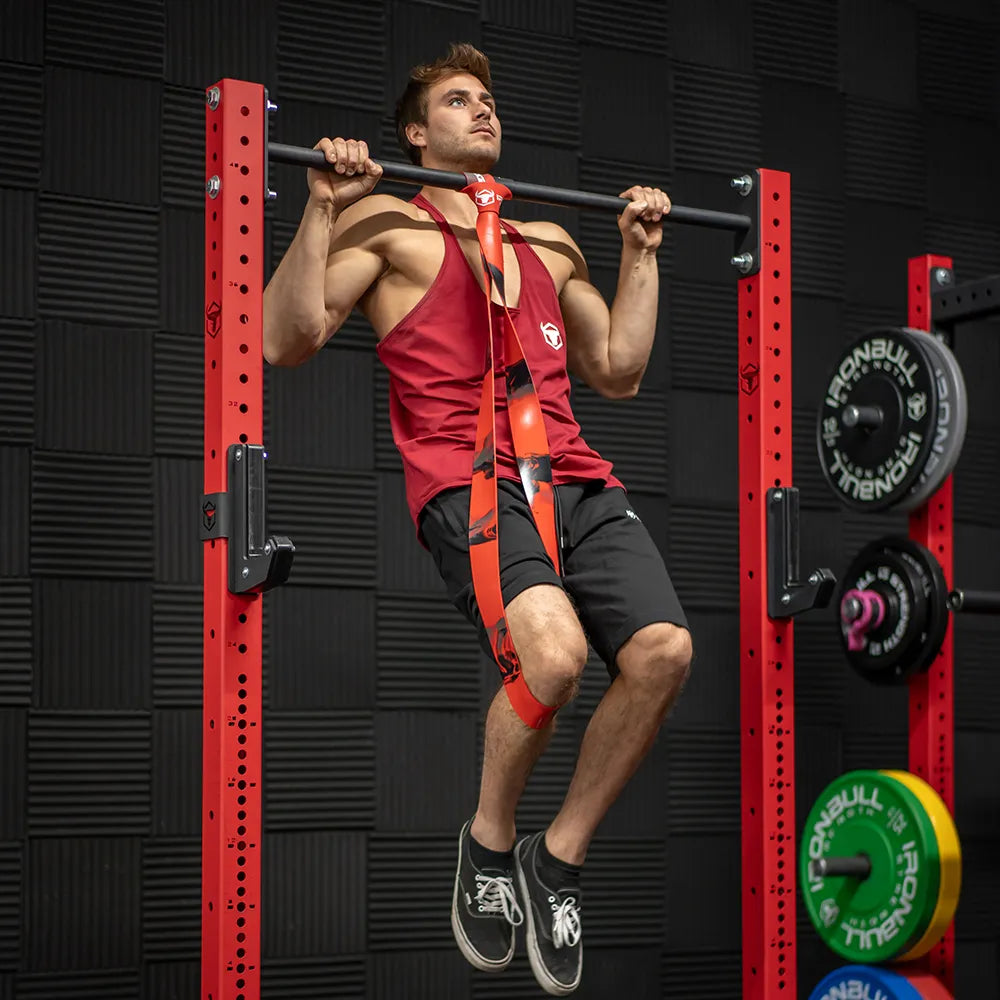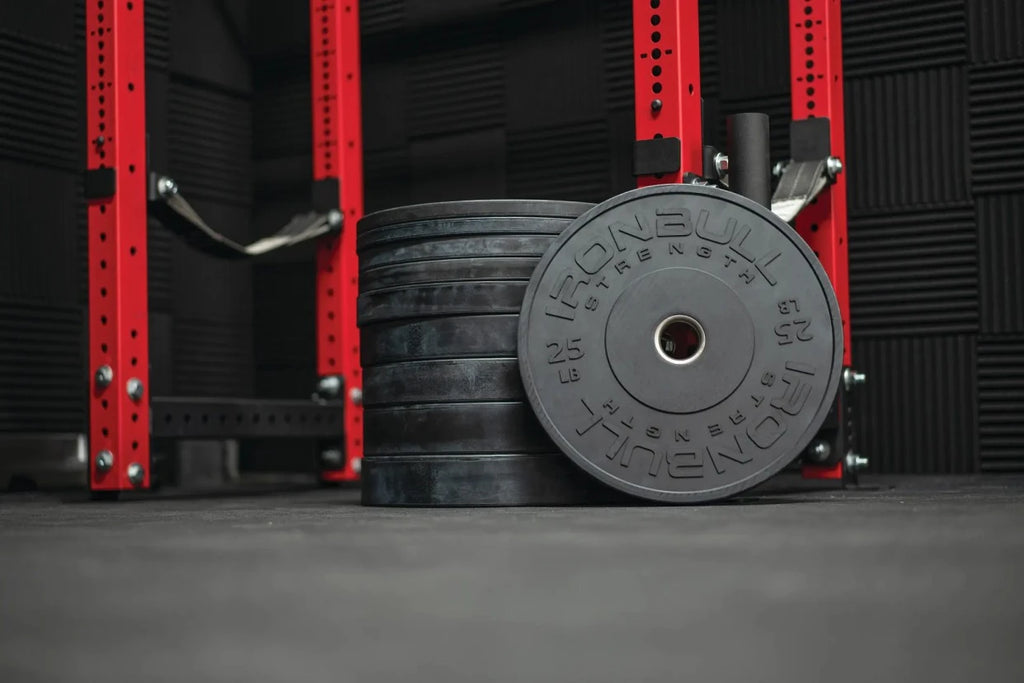Alternatives to Barbell Back Squats: 18 Variations to Enhance Your Workout


Importance of squats
Squats are like the Swiss Army knife of the fitness world. They engage multiple muscle groups, improve strength, and enhance overall athletic performance.
Whether you're an aspiring bodybuilder or just trying to keep up with your kids, squats are essential for building a solid foundation.
These movements mimic everyday activities, making them functional and practical. From picking up groceries to climbing stairs, squats prepare your body for real-life challenges.
They also promote better balance and coordination, which is crucial as we age. So, if you want to stay spry and agile, squats should be your go-to exercise.
Yet, despite their benefits, not everyone can or wants to perform traditional barbell back squats. Whether due to injury, mobility issues, or personal preference, exploring alternatives that can still deliver impressive results is vital.
The good news? There are plenty of options to keep your workout fresh and effective.
Quick reference guide
Here's a handy table summarizing 18 squat alternatives, their key benefits, and difficulty levels. This quick reference can help you decide which squat to try next based on your goals and fitness level.

How to use my squat guide
Navigating through this guide is straightforward. Each section highlights a specific squat alternative, detailing how to perform it, its benefits, and any special considerations.
Whether you're looking to switch things up or find a suitable option for your needs, you'll find plenty of information to help you make an informed choice.
When implementing these exercises into your routine, consider your current fitness level and any limitations you may have. It's often best to start with a few basic movements and gradually incorporate more complex ones as you gain confidence and strength.
Mixing in different squat types can keep your workouts exciting and challenging. So, don't hesitate to experiment and find what works best for you.
Low bar vs. high bar squats
Low bar squats are a favorite among powerlifters. The barbell sits lower on your back, typically across the rear deltoids.
This positioning shifts the focus onto the posterior chain, engaging your glutes and hamstrings more effectively. It's a great option for those with longer femurs or tight ankles and hips, as it allows for a more natural squat depth.
On the flip side, use high bar squats to place the bar higher on your traps. This variation emphasizes the quads and requires more mobility in the ankles and hips.
It's often favored by non-powerlifters and athletes who need to maintain an upright torso during squats.
Both types have their merits, so consider your body type and mobility when choosing which one to incorporate into your routine.
Box squats
Box squats are a fantastic way to build explosive power. By squatting down to a plyo box or bench, you can focus on form and control.
This method also helps you learn to sit back into your squat, which is crucial for proper technique.
For beginners, box squats can provide a sense of security. You know exactly how low to go, which can alleviate fears of falling or losing balance.
Plus, they're a staple in cross-training programs, as they help athletes develop the strength needed for various sports.
Incorporating box squats into your routine can lead to significant improvements in your overall squat performance.
Tempo and pause squats
Tempo squats are all about control. By slowing down your descent and exploding back up, you increase the time under tension for your muscles.
This technique can lead to greater strength gains and muscle growth.
Pause squats take this concept a step further. By pausing at the bottom of the squat without fully sitting down, you build strength and stability in a challenging position.
This can be particularly beneficial for those looking to improve their overall squat depth and power.
Both techniques require focus and discipline, but the results can be well worth the effort.
Front squats
Front squats are a great way to engage your entire body. With the barbell resting on your front shoulders, you'll need to maintain an upright torso, which requires significant upper back and core strength.
This variation is particularly beneficial for those looking to improve their squat form and overall strength. However, it does require good shoulder and wrist mobility.
If you struggle with these areas, consider using modifications like a cross-arm grip or a front rack with a resistance band.
Front squats can be a game-changer for your fitness routine, offering a different challenge and a fresh perspective on squatting.
Zercher squats
Zercher squats are unique because the barbell is held in the crooks of your elbows. This positioning helps maintain an upright torso and reduces strain on your back.
It's an excellent option for those who experience discomfort during traditional squats.
While they may feel awkward at first, Zercher squats can be a valuable addition to your routine. Just be mindful of your comfort level and weight limitations, as the bar can be challenging to hold for extended periods.
Give them a shot if you're looking for something different that still packs a punch.
Safety squat bar (SSB) squats
Safety squat bar squats are a fantastic alternative for those with upper body injuries or mobility issues. The unique design of the SSB allows for a more natural movement pattern, engaging your upper body and core while reducing strain on your shoulders.
This variation is beginner-friendly and can help you build strength without the risk of aggravating existing injuries.
If you're looking for a way to continue squatting while dealing with upper body limitations, the safety squat bar is worth considering.
Overhead squats
Overhead squats are a challenging yet rewarding movement. They require significant shoulder mobility and stability, making them an excellent choice for those looking to enhance their overall fitness.
To start, you can practice with a PVC pipe or a light training barbell to master the form before progressing to heavier weights. Overhead squats engage your entire body, from your shoulders to your core and legs, making them a fantastic full-body workout.
Just be cautious and ensure you have the necessary mobility before diving into this demanding exercise.
Landmine squats
Landmine squats are a versatile option that can accommodate various fitness levels. Using a landmine attachment or a corner setup, you can perform squats with reduced strain on your shoulders and wrists.
This variation is particularly beneficial for those recovering from injuries or looking to avoid discomfort during traditional squats. The angled bar allows for a more natural movement pattern, making it easier to maintain proper form.
Landmine squats can be a valuable addition to your workout routine, offering a unique challenge without the risks associated with other squat types.
Cyclist squats
Cyclist squats are all about quad engagement. By elevating your heels on a plate or a pair of iron wedge, you shift the focus to your quadriceps, making this variation particularly effective for leg development.
This squat type can be progressed from bodyweight to loaded variations, allowing you to tailor the intensity to your fitness level.
If you're looking to build strength in your quads while also improving your squat form, cyclist squats are a solid choice.
Sissy squats (knees-over-toes squats)
Sissy squats, or knees-over-toes squats, focus on quad strength and foot stability. This movement involves leaning back while keeping your knees forward, which can be challenging but rewarding.
To progress safely, start with body weight and gradually add resistance as you become more comfortable.
Sissy squats can be a fantastic addition to your routine, helping you build strength and stability in your legs.
Goblet squats
Goblet squats are a beginner-friendly option that involves holding a dumbbell, kettlebell, or medicine ball close to your chest. This front-loaded squat variation helps improve form and encourages an upright torso.
You can easily modify the weight based on your fitness level, making it accessible for everyone.
Goblet squats are a great way to introduce squatting to newcomers while still providing a solid workout for seasoned lifters.
Hack squats
Hack squats can be performed with free weights or machines, offering flexibility in your workout routine. This variation targets your quads while allowing for a more controlled movement.
When using machines, ensure you maintain proper form to avoid injury.
Hack squats can be a valuable addition to your leg day, providing a different challenge while still focusing on strength development.
Bulgarian split squats
Bulgarian split squats are all about single-leg strength and balance. By elevating one foot behind you, you can focus on your front leg while also engaging your core.
This movement can be progressed with added weights or variations, making it suitable for all fitness levels.
If you're looking to enhance your leg strength and stability, Bulgarian split squats are a fantastic option.
Pistol squats
Pistol squats are an advanced single-leg squat variation that requires significant strength and balance. If you're up for the challenge, they can be a great way to push your limits.
To progress, start with assisted versions or partial squats before working your way up to the full movement.
Pistol squats can be a rewarding addition to your routine, but be mindful of your mobility and strength levels.
Jump squats
Jump squats are all about explosive power development. By adding a jump at the top of your squat, you can enhance your athletic performance and build strength.
Start with body weight and gradually add resistance as you become more comfortable.
Jump squats can be a fun way to mix up your routine while still focusing on strength and power.
Cossack squats
Cossack squats focus on lateral movement and adductor strength. This variation requires you to shift your weight from side to side, engaging different muscle groups.
For an advanced challenge, try the Cossack squat touchdown, where you reach down to touch the ground.
Cossack squats can be a unique addition to your routine, helping you build strength and flexibility in new ways.
Shrimp squats
Shrimp squats are a single-leg quad-focused movement that can be quite challenging. They require balance and strength, making them suitable for advanced lifters.
To progress, start with assisted versions or partial squats before working your way up to the full movement.
If you're looking to challenge yourself and build strength, shrimp squats can be a rewarding option.
Belt squats
Belt squats are a fantastic way to reduce spine tension while still engaging your lower body. By using a belt squat machine or setup, you can accommodate upper body injuries and focus on leg strength.
This variation allows you to maintain proper form while still getting a solid workout.
Belt squats can be a valuable addition to your routine, especially for those dealing with upper body limitations.
Mobility and flexibility prerequisites
Before diving into any squat type, it's essential to assess your mobility and flexibility. General mobility requirements for squatting include adequate ankle, hip, and thoracic spine mobility.
Each squat type may have specific mobility needs, so it's crucial to understand what's required for your chosen variation.
Incorporating recommended mobility exercises and stretches into your routine can help improve your overall squat performance.
Programming tips
Incorporating different squat types into your workout routine can keep things fresh and exciting. Consider your fitness goals when selecting which squats to include.
Sample workout plans can help you tailor your routine to your specific needs, whether you're focusing on strength, endurance, or power.
Progression strategies are essential for continued growth, so don't hesitate to challenge yourself as you become more comfortable with each squat type.
Safety tips: Keeping your squats secure and effective
Let's face it- safety isn't just a buzzword; it's the backbone of any solid workout routine.
When it comes to squats, taking precautions isn't just smart, it's essential. After all, you want to build those legs of steel, not end up with a back that feels like it's been through a wringer
First things: let's talk belts. A good weightlifting belt can be your best friend during heavy squat sessions. It's like a shield for your core, providing that extra bit of support when you need it most.
Now, you've got options here. A prong belt is like the comfy jeans of the weight belt world - reliable, comfortable, and gets the job done.
On the other hand, a lever belt is the superhero of core compression. It's easier to get on and of, and it's got your back (literally).
But hey, a belt is just the beginning. If you really want to squat with confidence, consider using a squat rack or power rack with safety arms or pins.
These bad boys are like your personal safety net. They allow you to push your limits without the fear of getting crushed under a heavy barbell.
It's like having a spotter that never gets tired or distracted by their phone. Plus, it gives you the freedom to fail safely, which, let's be honest, is part of the journey to squat mastery.
Remember - there's no shame in prioritizing safety. In fact, it's the mark of a smart lifter.
By taking these precautions, you're not just protecting yourself from injury; you're setting yourself up for long-term success. After all, you can't make gains if you're sidelined with an injury, right?
Common mistakes and how to avoid them
When squatting, it's crucial to maintain proper form to avoid injury. Common squat form errors include letting your knees cave in, rounding your back, or lifting your heels off the ground.
Each squat type may have specific mistakes to watch out for, so be mindful of your technique as you progress.
Correcting these errors can lead to better performance and reduced risk of injury, so take the time to focus on your form.
Incorporating different squat types into your routine can enhance your workout and keep things interesting. Finding the right squat for your individual needs can lead to better results and a more enjoyable fitness journey.
So, go ahead and explore the options available, and remember: variety is the spice of life!











